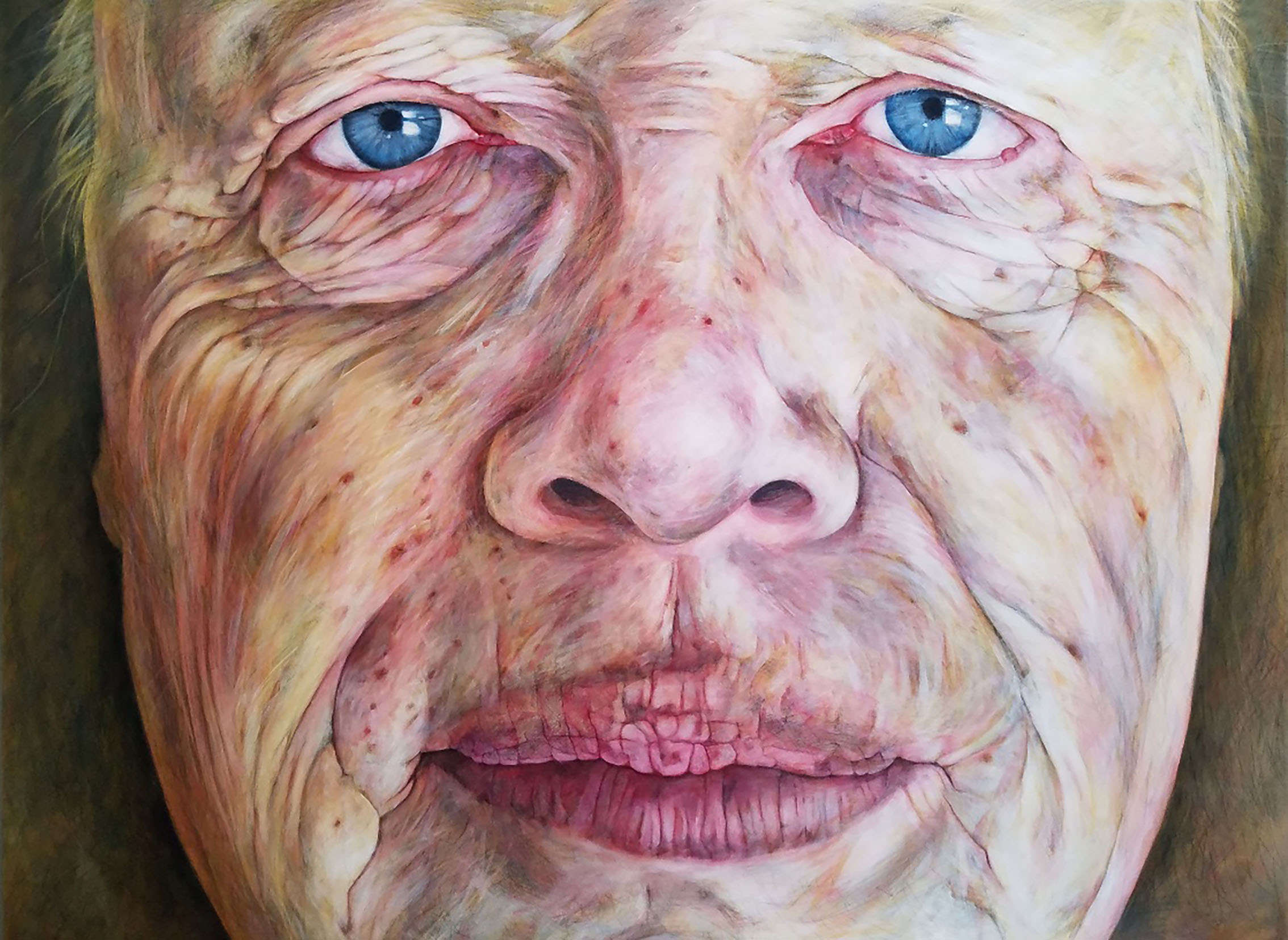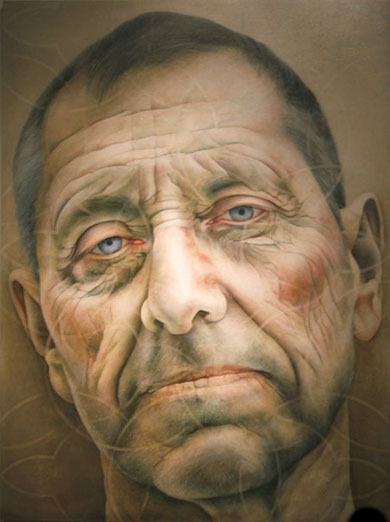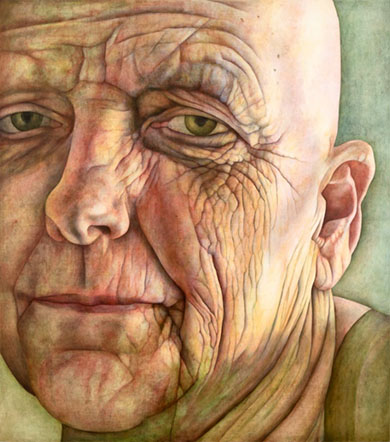Vicki Walsh
My work combines psychology and life experiences to investigate themes of physical appearance and the marginalized individual. As a retired forensic medical illustrator, I draw upon 20 years of rendering techniques to emote the inner conditions that connect us. For the majority of my career, I have been preoccupied with faces, photographing friends and myself for subject matter. But in the new body of work, I employ the metaphor of the "Black Sheep" as a figure that acts differently than the expected norm and may therefore be disregarded and marginalized.
The surface I use is a polyester-wrapped cradled panel that retains a smooth finish with little texture to the touch. This allows me to draw out the image first with graphite, with no disruption of the pencil line. I then build up numerous thin layers of translucent oil paint to create a layered or luminous look. This a lengthy process and takes long periods of time to achieve the final desired surface.
My early influences were Stephen Kaltenbach's painting Portrait of my Father and Leonardo da Vinci's grotesque studies and the contrast of beauty. It seems this contrast was a lifetime interest to him as well as to me.
In 1980 while looking at Stephen Kaltenbach's Portrait of my Father at the Newport Harbor Art Museum, I had a Stendhal syndrome moment. It was the summer following my BFA graduation from CSULB. Art of all kinds had defeated me in the late 70s and I had low expectations as I left college. When rounding a corner into a back narrow room, I saw his painting hung at one end. I was dumbstruck by the sheer size of the work. His ability to have the painting change form as you walked closer to it was diffucult to even conceive. Yet there it was. He had overlayed an arabesque pattern that came forward as you got closer and disappeared as you retreated, leaving the portrait. The pattern was an Islamic design used as a sacred form of thought and expression representing the infinite nature of the universe. I was mystified and in one instant was on a circuitous path to create my own paintings. As synchronicity would have it, I met Kaltenbach in 2009 and photographed him for this work. I similarly used a repetitive geometric pattern over the image of his portrait. This is Stephen, a painting of the artist.
Erica was a neighbor of mine who was undergoing chemotherapy for a life-threatening bout of leukemia. This day she had been told the bone marrow transplant from her brother was going to save her life. While she had lost all her hair and every bit of what our culture considers clues of gender, she stands alive without a care of what others think. Sitting on the stairs as I was leaving, she was buddha-like in the strong ray of light. I asked if I could photograph her. I believe she knew why. This is her amazing face.

In Pretty Me, I've shown myself in considered opinion of Leonardo's "Grotesque" and "Divine" images. He played with this idea for a good portion of his life. The geometric rectangle in the center of my painting isolates the focus of the eyes as the beholder. The "Beauty" image, being indifferent to my gaze, is looking away from my profile to make direct eye contact with the viewer. "Grotesque" is looking towards my second profile in stern conviction.

In 1522, Hans Holbein painted The Body of the Dead Christ in a Tomb as a commissioned piece. My inspired piece was painted in 2020 when the Covid pandemic was making its initial sweep. When Holbein painted Dead Christ there was a similar plague circulating Europe at that time. It's been said that his painting represented atheism and the Christian struggle to maintain their faith. The body is shown naked except for the narrow cloth. No stigmata can be seen in my painting and the body is not as dead as in Holbein's painting. The question is in the title, will we all live or die.

This painting is one in a series of portraits where ideal beauty is questioned. Every mole, wrinkle and blemish is depicted. Is it realism or exaggerated? I get accused of both. Certainly, the large size creates an illusion of importance and possible judgement. We hide so much of ourselves when we walk out the door to meet a friend or go to school. If you are going to hide your perceived imperfections, are you hiding yourself as well? This is Brett. In all his glory, large and proud.

Vicki Walsh was born in Lancaster, California. Her family moved numerous times, as her father was an engineer on the 1960s space program until his death in an auto accident. Vicki graduated with a BFA in Painting from California State University at Long Beach and took additional coursework in bio-medical illustration. After graduating in 1980, she started her own business creating forensic medical illustrations, and in 2000 stepped away from the company to become a full time artist. Vicki applied and was accepted into the graduate program at the San Francisco Art Institute and received her MFA in Studio Art in 2006.
Since graduation, Vicki has had a solo show at a San Diego gallery and then numerous other exceptional group and solo shows at regional museums and local galleries. She now has her own professional art studio called SIP Art Space in San Marcos, California, where she continues her painting practice and teaches private painting workshops, as well as ongoing college art level classes.

